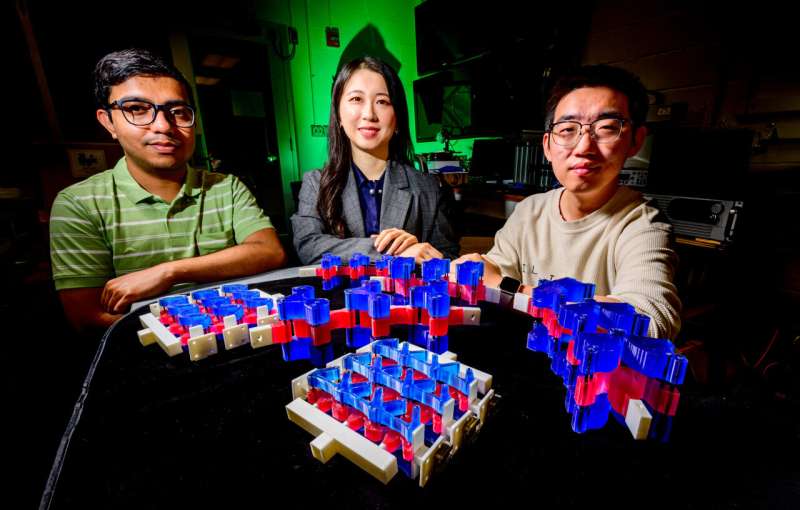Millions of years of evolution have enabled some marine animals to grow complex protective shells composed of multiple layers that work together to dissipate physical stress. In a new study, engineers have found a way to mimic the behavior of this type of layered material, such as seashell nacre, by programming individual layers of synthetic material to work collaboratively under stress. The new material design is poised to enhance energy-absorbing systems such as wearable bandages and car bumpers with multistage responses that adapt to collision severity.
Many past studies have focused on reverse engineering to replicate the behavior of natural materials like bone, feathers and wood to reproduce their nonlinear responses to mechanical stress. A new study, led by the University of Illinois Urbana-Champaign civil and environmental engineering professor Shelly Zhang and professor Ole Sigmund of the Technical University of Denmark, looked beyond reverse engineering to develop a framework for programmable multilayered materials capable of responding to local disturbances through microscale interconnections.
The study findings are published in the journal Science Advances.
“This work was born out of a discussion with my collaborator, Professor Sigmund, about how we already can achieve some very extreme behaviors, but there’s always a physical limit or upper bound that single materials can achieve, even with programming,” Zhang said. “That led us to consider what kind of engineering could enable some of the crazy material behaviors needed in real life. For example, extreme buckling behaviors could help dissipate energy for things like car bumpers.”
That is when the team turned their attention to biological materials with multiple layers serving a different purpose, and how they could fabricate a synthetic material and use internal, microscale programming and optimization to control its response to mechanical stress and strain.
“We landed on the idea to design multilayered materials with each layer being capable of exhibiting different properties and behaviors,” Zhang said.
But not stopping there, the team pushed themselves to include the ability of individual layers to collaborate to essentially behave collectively as one.
“Our new framework presents several advantages over existing methodologies for nonlinear stress-strain responses,” Zhang said. “It optimizes nacre-like multiple layers along with their interconnections in a continuum setup, which significantly expands the design space compared to similar work involving a single-layer setup or lattice structures.”
During fabrication, the team learned some lessons. The theoretical idea behind this work is to have an infinitely periodic material. Still, the team must fabricate finite units, and it was to be expected that the theoretical material and the actual fabricated material would exhibit different behaviors.
“The discrepancy we found is something that will always happen in real life,” Zhang said. “But we can harness this information to intentionally program the sequence of the buckling of each of the individual cells in assembly, store some information inside, and then later we can decode the information. It was fascinating to capture this discrepancy and for it to end up providing information needed to improve the work.”
There is still a lot of work to be done to scale up fabrication for this type of material, but Zhang said that one valuable thing learned from this study is that when people collaborate, they achieve much greater things.
“I think it works the same for materials,” Zhang said. “When different materials collectively work together, they can do things that are much more impactful than if they do things individually.”
More information:
Zhi Zhao et al, Extreme nonlinearity by layered materials through inverse design, Science Advances (2025). DOI: 10.1126/sciadv.adr6925
Provided by
University of Illinois at Urbana-Champaign
Citation:
Synthetic materials mimic seashells to enhance energy absorption (2025, May 16)
retrieved 16 May 2025
from https://phys.org/news/2025-05-synthetic-materials-mimic-seashells-energy.html
This document is subject to copyright. Apart from any fair dealing for the purpose of private study or research, no
part may be reproduced without the written permission. The content is provided for information purposes only.

